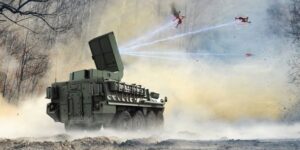
General Dynamics’ Land Systems [GD] (GDLS) and Epirus announced on Monday they agreed to team up to integrate a directed energy system onto the Army’s Stryker for more Short Range Air Defense (SHORAD) capabilities. GDLS originally built the Stryker for the Army and Epirus specializes in developing high-powered microwaves (HPM) for defense applications. The companies said the Strategic Teaming Agreement specifically will add Epirus’ counter-electronics directed energy system and other HPM technology on to the Army’s Stryker and other manned…

 By
By 











